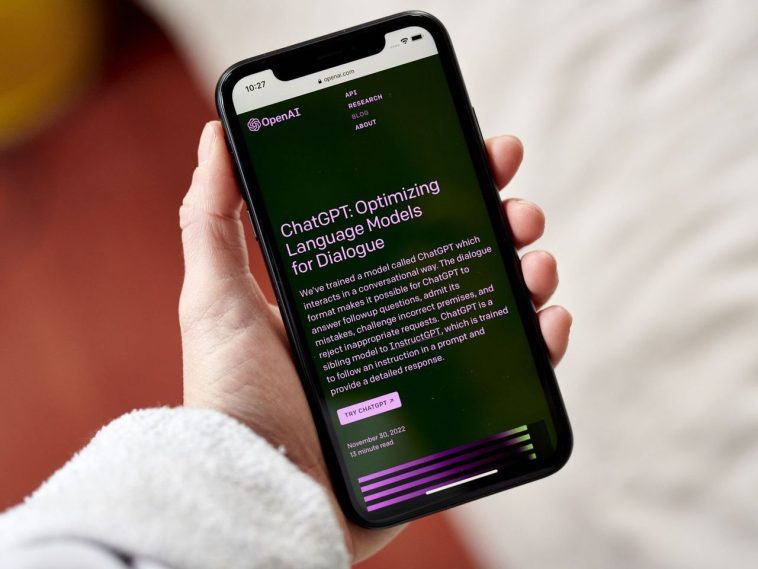Introduction.
Writing a blog post can be daunting, especially if you’re facing a creative block or just can’t find the time.
ChatGPT offers an easy way to brainstorm ideas, structure articles, and even polish up your drafts.
With AI-powered assistance, crafting a blog post doesn’t have to feel like climbing a mountain.
I’m here to walk you through everything you need to know to write a solid blog post using ChatGPT, from start to finish.
What You’ll Learn
- How ChatGPT can streamline your blog writing process
- Tips for effectively using prompts and organizing content
- The pros and cons of using ChatGPT as a writing tool
- A quick FAQ covering common concerns about AI-driven content
Whether you’re a beginner just starting your blog or a seasoned writer looking for fresh ideas, ChatGPT has something to offer.
How Do I Write a Blog Post With ChatGPT?
Writing a blog post with ChatGPT can simplify the entire writing process, from idea generation to final edits. Here’s how to maximize its potential.
Step 1: Choose Your Topic and Set a Goal.
Before even opening ChatGPT, think about what you want to write about and who you’re writing for. If you’re stuck for ideas, ask ChatGPT questions like, “What are some trending blog topics in [your niche]?” or “What are 5 blog post ideas on [specific topic]?” This can give you a list of ideas in seconds.
Step 2: Outline Your Article Structure
Once you have a topic, the next step is to outline your blog. ChatGPT can create a rough structure for you if you ask it to “Generate an outline for a blog post on [your topic].”
This is great if you need help organizing thoughts or making sure you’re covering all the main points.
A typical blog post structure includes:
- Introduction: Hook readers and introduce the topic.
- Body: Main sections, usually split into subheadings.
- Conclusion: Summarize key points and give a final thought.
Feel free to add a Call to Action (CTA) or an FAQ section if you think it’ll help readers.
Step 3: Draft Your Content.
ChatGPT can help you draft entire sections or paragraphs if you type in prompts like, “Write a short paragraph on why SEO is important for blogs.”
This part can be incredibly helpful if you’re trying to break down complex topics or make technical information more readable. ChatGPT also helps keep the writing style consistent, which is key for blog readers.
If you want to sound more like yourself, ask ChatGPT to “Rewrite this section in a conversational tone” or “Make this more formal/informal,” depending on your preferred style.
Step 4: Edit and Polish the Draft.
ChatGPT can help with grammar and clarity if you’re working on a rough draft. Simply ask it, “Edit this paragraph for clarity and grammar.” But it’s essential to go over it personally for accuracy and to make sure it aligns with your voice.
One useful approach is to ask ChatGPT for a “list of commonly used words in this draft” or to “summarize each paragraph in one sentence” to ensure your points are clear.
Step 5: Add Personal Touches and Final Edits.
AI can only go so far in terms of personality. Readers connect best with posts that feel genuine. Add anecdotes, personal opinions, or specific examples only you can provide. This makes the post stand out and sound less robotic.
Pros and Cons of Writing a Blog Post with ChatGPT
Pros
- Efficiency: ChatGPT can save time on drafting and structuring posts.
- Idea Generation: When writer’s block hits, ChatGPT can give fresh ideas.
- Consistency: Helps maintain a uniform tone and style across the content.
- Grammar and Clarity: It’s handy for quick grammar checks and rephrasing.
Cons
- Lacks a Personal Touch: The AI doesn’t fully capture your personality, so the content can feel a bit generic without customization.
- Accuracy Needs Checking: It can occasionally provide inaccurate information, so fact-checking is essential.
- Dependence Risk: Relying on it too much might reduce creativity and original thinking.
- Limited Niche Depth: ChatGPT can produce general content well but might struggle with in-depth knowledge in highly specific fields.
FAQ
1. Can ChatGPT generate unique content?
Yes, but always run it through plagiarism checkers, especially for larger sections. ChatGPT generates content that should be unique but might reflect common phrases or general knowledge on a subject.
2. Is using ChatGPT for blog writing considered cheating?
No, it’s a tool like any other. Think of it as an assistant that speeds up research, brainstorming, and drafting. As long as you’re involved in refining the content, it’s still your work.
3. Will using ChatGPT affect my site’s SEO?
If used carefully, it shouldn’t. Make sure to customize and optimize for keywords, user experience, and readability. Over-relying on generic AI content without adding your own insights may impact SEO negatively.
4. How much of the draft should I keep, and how much should I change?
It depends on the content quality and tone. For informative pieces, you might retain most of it, while for personal or opinionated pieces, you’ll probably want to adjust it more.
Conclusion
ChatGPT can be a valuable writing tool, especially for blogging. It can speed up your workflow, generate ideas, and help organize your content.
But, like any tool, it’s most effective when combined with your insights, experiences, and creativity. With careful use, ChatGPT can turn your blog-writing routine from a task into a breeze.
Would you consider using ChatGPT to streamline your blog writing process, or do you prefer the traditional approach?





GIPHY App Key not set. Please check settings